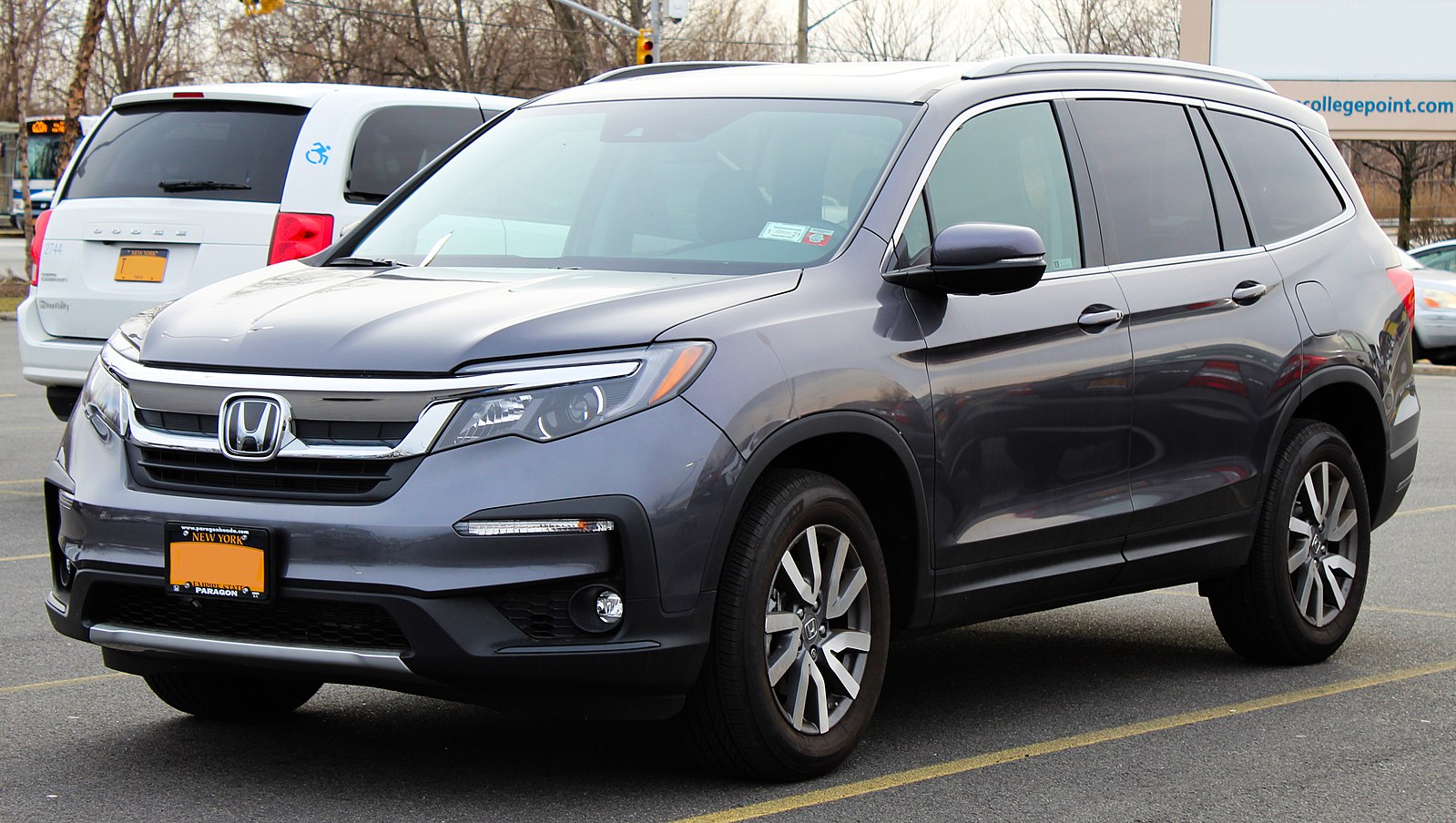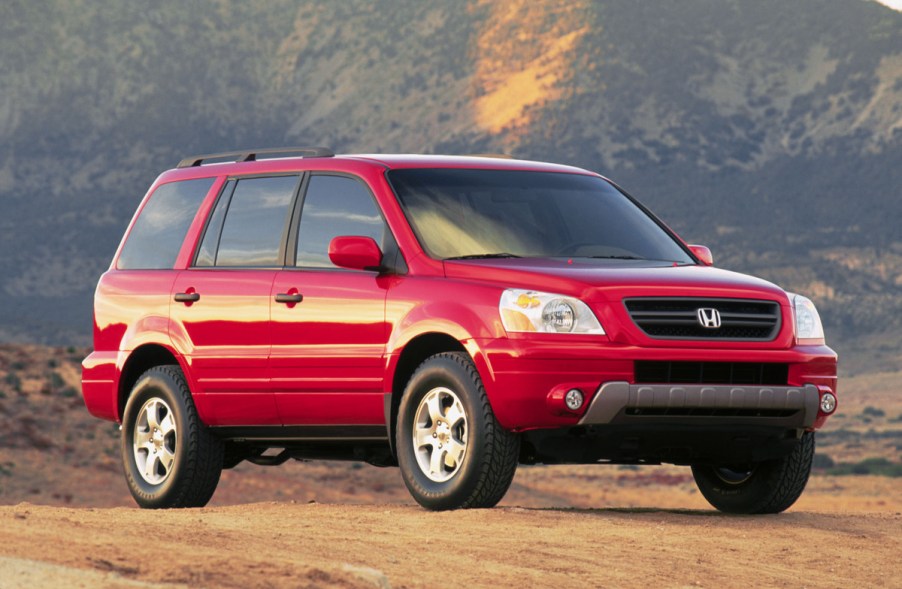When you’re in the market for a used Honda Pilot, your goal is to find a reliable vehicle that offers safety, comfort, and value for your hard-earned money. However, not all used Honda Pilots are created equal.
Some model years have proven to be more problematic than others, potentially leading to costly repairs and maintenance headaches down the road. You deserve to know which years to steer clear of, ensuring a smooth ownership experience. You’ll discover crucial insights and expert advice to help you make a savvy purchase decision.
Read on to protect yourself from unwanted surprises and drive away with confidence.
Common Issues In Honda Pilot
When considering a used Honda Pilot, understanding common issues can save you time and money. Despite its reputation for reliability, certain Honda Pilot models have recurring problems that can be costly. Knowing these issues will help you make an informed decision.
Engine Problems
Engine issues are among the most reported problems in older Honda Pilots. You might encounter excessive oil consumption, which can lead to engine wear. This is especially common in models around 2009. Imagine the inconvenience of constantly checking and refilling oil. It’s not just a nuisance; it can signal deeper engine troubles.
Another concern is engine misfires. This can result in reduced performance and fuel efficiency. Misfires are often due to faulty spark plugs or ignition coils. Picture yourself on a long drive, only to feel your vehicle stutter unexpectedly. It’s unsettling and can be dangerous.
Transmission Failures
Transmission failures are another issue to be wary of. Pilots from certain years, like 2003 and 2005, have reported issues with slipping gears. This can make driving unpredictable and even risky. Imagine accelerating onto a highway, only for your car to fail to shift properly. The anxiety is real.
You might also face torque converter problems. This can lead to shuddering or stalls at low speeds. Such issues can turn a simple trip to the grocery store into a nerve-wracking experience. Why risk it if you can choose a model with fewer transmission complaints?
Electrical System Malfunctions
The electrical system in some Honda Pilots can be finicky. Issues with the dashboard lights or faulty sensors can arise. This can lead to inaccurate readings, leaving you in the dark about your vehicle’s condition. Imagine driving at night and suddenly losing dashboard visibility. That’s something no driver wants to experience.
Problems with the air conditioning system have also been reported. Imagine a sweltering day when your AC decides to quit. It’s not just uncomfortable; it can be distracting, impacting your focus on the road. Ensuring these systems are checked before purchase is essential.
Have you experienced any of these issues with a used Honda Pilot? Share your story below and help others make a better choice.

Credit: www.copilotsearch.com
Problematic Model Years
When searching for a reliable used Honda Pilot, it’s crucial to know which model years have faced significant issues. While Honda is known for its dependable vehicles, some Pilot years have experienced recurring problems that potential buyers should be aware of. Understanding these problematic years can save you from unexpected repairs and ensure you’re investing in a vehicle that meets your expectations.
2003 Honda Pilot
The 2003 Honda Pilot, being the debut year, came with its share of teething troubles. Transmission failures were notably frequent, leaving many owners frustrated and facing hefty repair bills. If you’ve ever experienced a sudden transmission issue on a busy highway, you know it’s not just inconvenient—it’s downright scary.
Moreover, electrical problems were common, affecting everything from dashboard lights to power windows. It was a tough start for Honda’s beloved SUV lineup. You might want to think twice before opting for this early version unless you’re prepared for potential repairs.
2005 Honda Pilot
The 2005 model continued to see persistent transmission issues, a concern that many owners voiced. Imagine planning a road trip only to have your transmission give out mid-way. Such disruptions can turn a pleasant journey into a stressful ordeal.
Additionally, this model year experienced air conditioning system failures, leaving drivers uncomfortable in sweltering summer heat. If you’re considering a 2005 Pilot, it’s wise to check if these systems have been replaced or professionally repaired to avoid unexpected expenses.
2016 Honda Pilot
Fast forward to the 2016 Honda Pilot, and while the design had evolved, certain issues persisted. This model year was plagued by problems with its infotainment system and touchscreens. Have you ever tried to change the radio station only to find the screen frozen? It’s frustrating, especially when technology should make life easier.
Another notable issue was with the auto start-stop system, which sometimes caused the vehicle to stall unexpectedly. Such quirks can be unsettling, especially if you’re relying on your car for daily commutes. If you’re looking at a 2016 Pilot, ensure these tech components are in top condition.
In your quest for a Honda Pilot, be mindful of these problematic years. Would you prefer peace of mind over potential repair hassles? Consider choosing a model year with fewer reported issues.
Understanding Recalls
Avoiding trouble with used Honda Pilots is crucial. Some model years have frequent recalls, signaling potential issues. Check recall history before buying to ensure safety and reliability.
When considering a used Honda Pilot, understanding recalls is crucial. Recalls are issued when a vehicle has a defect that poses safety risks to drivers and passengers. They can range from minor issues to major safety hazards. Knowing how recalls work will help you make an informed decision about which Pilot years to avoid.Safety Recalls
Safety recalls address defects that could lead to accidents or injuries. These recalls are not just about minor inconveniences; they are about your safety on the road. Imagine driving your family on a vacation, only to discover a critical component of your vehicle fails. The National Highway Traffic Safety Administration (NHTSA) often initiates these recalls. They ensure that manufacturers correct safety issues that could harm you or others. It’s essential to check the recall history of any used Honda Pilot you’re considering.Manufacturer Actions
Once a safety recall is announced, manufacturers must take action. They typically offer repairs or replacements at no cost to the owner. This process might sound reassuring, but it’s vital to check if the previous owner addressed the recall. Manufacturers sometimes delay or struggle to provide parts for repairs. This can leave you waiting and worrying about driving a potentially unsafe vehicle. Have you ever bought a used car, only to find out later it had unresolved recalls? It’s a frustrating experience that can be avoided with thorough research. You can access recall information through online databases or by contacting Honda directly. Always ensure that any used vehicle you consider has had all recalls properly handled. This step can save you from unexpected problems and ensure your peace of mind. Understanding recalls is not just about knowing the defects—it’s about safeguarding your driving experience. Take control of your safety by being informed and proactive.
Credit: www.motorbiscuit.com
Maintenance Costs And Repairs
Owning a used Honda Pilot can be a rewarding experience. Yet, maintenance costs and repairs can impact your wallet. Knowing which years to avoid can save you money. Some models have higher repair bills. Understanding these costs helps in making informed decisions.
Average Repair Costs
Repair costs vary greatly among different Honda Pilot models. Earlier models often require frequent fixes. Common issues include transmission problems and brake pad replacements. These repairs can cost hundreds of dollars. Newer models usually have fewer issues. They may still need minor repairs, but less often.
It’s crucial to check the average repair costs before purchasing. Online forums and reviews can provide insights. They often list common problems by model year. This information helps in budgeting for potential repairs. Avoid models with known expensive issues.
Long-term Maintenance
Long-term maintenance is another crucial factor. Older Honda Pilots may need regular upkeep. This includes oil changes, tire rotations, and fluid checks. These routine tasks ensure the car runs smoothly. Neglecting maintenance can lead to costly repairs.
Some years require more frequent maintenance. Look for models with a good track record. They tend to have lower long-term maintenance needs. Checking maintenance history is vital. It reveals how well previous owners cared for the vehicle. A well-maintained car often means fewer surprises.
Alternative Reliable Models
Considering a used Honda Pilot? Some years might not be the best choice. Fortunately, there are reliable alternatives to explore. These models offer better performance and fewer issues. Let’s dive into recommended model years and their standout features. Choose wisely and enjoy peace of mind on the road.
Recommended Model Years
The 2011 and 2015 Honda Pilots are great options. They have high reliability ratings. The 2013 model also offers a good balance between price and features. These years avoid common pitfalls found in other models. They provide a smooth ride and solid performance. Choose these years for a dependable driving experience.
Features Of Reliable Models
Reliable Honda Pilots come with strong engines. They offer efficient fuel consumption. The interiors are spacious and comfortable. Advanced safety features enhance security on the road. Reliable models also have user-friendly infotainment systems. They provide a great balance of technology and comfort. These features make them a solid choice for families.

Credit: www.capitalone.com
Tips For Buying Used Honda Pilot
Buying a used Honda Pilot can be a smart decision. It offers reliability, comfort, and space. Yet, not all years are ideal. Some models have known issues. It’s wise to know what to check. Below are tips to ensure you make a wise purchase.
Inspection Checklist
First, examine the exterior. Look for dents or rust. Check the tires for wear. Open and close all doors. Ensure they align properly.
Next, inspect the interior. Check for stains or tears. Test all electronics. The radio, air conditioning, and windows should work. Start the engine. Listen for unusual noises.
Test drive the car. Check the brakes and steering. Make sure they respond well. Pay attention to acceleration. It should be smooth.
Negotiating Price
Research the market value. Know what similar models cost. This helps in negotiations.
Point out any issues found. Use them to lower the price. Be polite but firm. Sellers may be willing to adjust.
Consider the vehicle history. A clean record can increase value. Any accidents or repairs should lower it.
Don’t rush the deal. Take your time. Ensure you’re satisfied with the price.
Conclusion
Choosing a reliable used Honda Pilot takes careful research. Some model years have more problems than others. Avoid years with known engine or transmission issues. Focus on models with positive reviews and strong reliability. Check maintenance records before buying. Ask questions about past repairs and replacements.
Doing this ensures a better purchase decision. A dependable car means fewer unexpected costs. Save money and stress by being informed. Happy car shopping!


